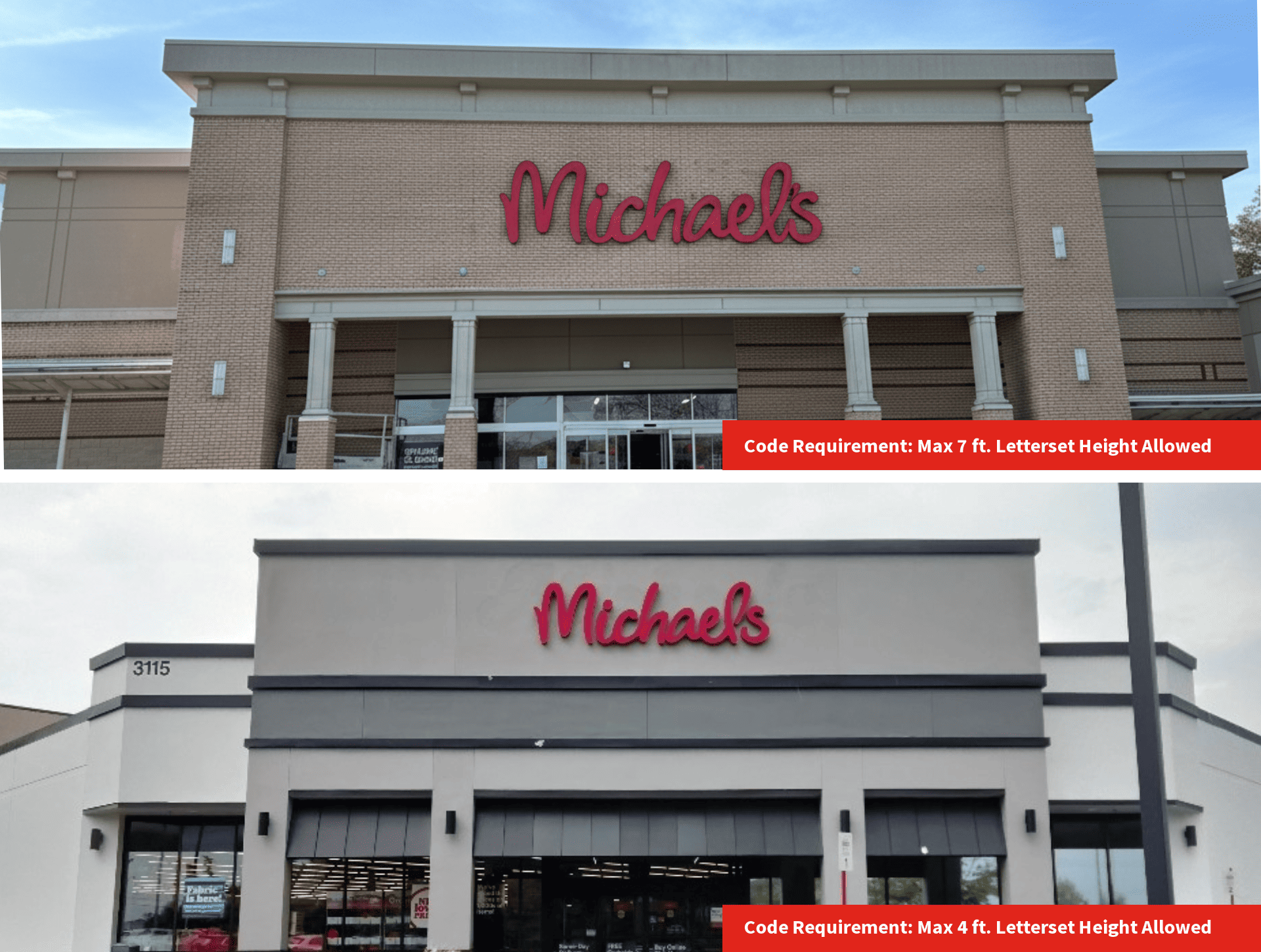Navigating the world of signage compliance is no small feat—especially for national brands with a footprint in every corner of the country.
Each state, city, and municipality brings its own unique set of ordinances and zoning requirements, often making what seems like a straightforward sign project a complex maze of rules and approvals. The stakes are high: overlooked details can lead to costly delays, fines, or even forced removal of signage that doesn’t meet local codes.
Whether you manage a growing retail chain or oversee signage for properties across multiple markets, understanding these best practices for signage compliance can help you protect your brand—and your bottom line. Connect with our team to review your current program or signage needs.
How to Navigate Varying Signage Regulations
No two states—or even cities—approach signage the same way. Some communities zero in on aesthetic standards, while others focus on safety or historic preservation.
Regulation details can include factors like:
- maximum sign sizes
- allowable colors and lighting
- sign placement
- distance from roadways
- message duration
- and even acceptable materials
These ordinances are constantly evolving to reflect community values and emerging technologies, making compliance a moving target for businesses expanding into new markets.
PSCO Sign Group has a proven track record of securing permits and variances by working collaboratively with city officials. Our expertise ensures that our clients remain fully compliant with local regulations while still achieving their branding and business objectives.
Common Compliance Challenges for National Brands
For national brands, the lack of standardization is a major hurdle.
A sign design approved in one state might be rejected in another for exceeding height restrictions, violating dark-sky lighting rules, or not aligning with local architectural requirements.
Permit application processes can range from quick online submissions to lengthy review periods or even public variance hearings. Existing signage may be “grandfathered in,” but significant repairs or branding updates can trigger new code reviews. Managing these variables across dozens or hundreds of locations demands careful coordination and expertise.

Strategies National Brands Use to Stay Compliant
Many companies partner with national signage providers who review both municipal codes and landlord criteria, ensuring all designs meet required standards before beginning the approval and permit submission process.
Because compliance is such an important part of the signage process, the fabrication of your signs usually won’t begin until all necessary permits have been secured.
Large, established brands usually have their own internal teams who handle signage permitting, or work with an experienced signage partner like PSCO. These permitting teams keep organized records of local rules, permits, and correspondence, then share that information with the installers so they know exactly what’s required in each location. They also will often use sign templates that can be easily modified to meet different local regulations.
For example, a national pharmacy chain might maintain a master sign design but adjust the size, illumination, or placement based on each community’s codes—ensuring both compliance and brand consistency.
Tips for Managing Multi-State Signage Compliance
- Develop a comprehensive brand book that includes your signage standards as well as acceptable alternates. This helps guide required changes while protecting your brand identity.
- Work with your signage partner to create site-specific designs that reflect both your brand’s vision and all local, state, and landlord signage requirements. Ensure that every code has been thoroughly reviewed before proceeding.
- Understand the local permitting process in every target market. This is critical to meeting your deadlines for new signage installations.
- In rare cases, businesses may choose to relocate to another jurisdiction with more favorable signage codes, ensuring needed visibility and compliance.
- Assign a dedicated team member to facilitate clear, prompt communication with your signage partner—delays are common in some jurisdictions due to lengthy processes or staff shortages. Experienced national signage providers are often familiar with these “problem markets” and can help set realistic expectations upfront.
Why Working with a Full-Service Sign Provider Makes a Difference
A reputable sign partner serves as your eyes and ears across all markets, proactively monitoring regulatory changes and ensuring every new sign installation meets local and state codes.
Our experienced teams guide you from initial design through permitting, fabrication, and final installation, minimizing surprises and costly rework. Trusted partnerships prevent compliance headaches, save time, and protect your brand’s reputation.
PSCO Sign Group – National Experience You Can Trust
PSCO Sign Group has been helping brands grow nationwide—and beyond—for over a century.
Our in-house experts support every stage of your market growth, from establishing signage standards and preparing permitting or engineering documents to meeting all installation requirements. We can also help you monitor your brand’s compliance as standards evolve or whenever you consider repairs or updates to existing signage.
Connect with our experts today for a signage compliance assessment and discover how our team keeps you compliant.